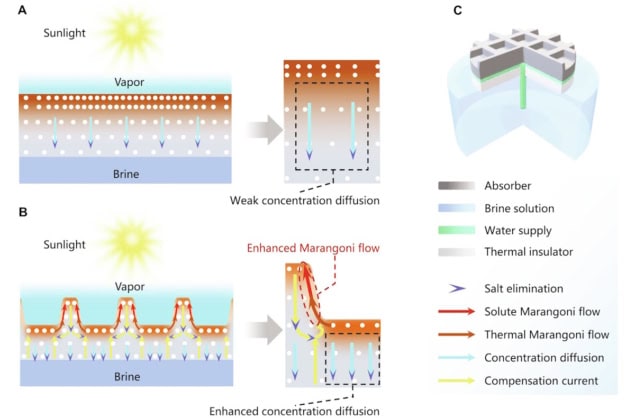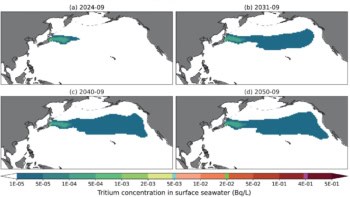
Water is a vital resource to society and is one of the main focus areas for the United Nations Sustainable Development Goals. However, around two thirds of the world still doesn’t have regular access to freshwater – with people in this category facing water scarcity for at least a month each year.
Alongside, every two minutes a child dies from water-, sanitation- and hygiene-related diseases; and freshwater sources are becoming ever more polluted, causing further stress on water supplies. With many water-related challenges around the world, new ways of producing freshwater are being sought. In particular, solar steam-based desalination methods are seen as a green way of producing potable water from seawater.
Solar steam generation a promising approach
There are various water treatment technologies available today, but one that has gathered a lot of attention lately is solar steam generation. Interfacial solar absorbers convert solar energy into heat to remove the salt from seawater and produce freshwater. By localizing the absorbed energy at the surface, interfacial solar absorbers reduce heat loss to bulk water.
Importantly, solar absorbers can be used off-grid and in remote regions, where potable water access is the most unreliable. However, many of these technologies cannot yet be made at scale because of salt crystallization on the solar absorber, which reduces both the light absorption and the surface area of the interface. Over time, the solar absorption capabilities become reduced and the supply of water becomes obstructed.
Quasi-waffle design could prevent crystallization
To combat the salt crystallization challenge, researchers in China have developed a waffle-shaped solar evaporator (WSE). The WSE is made of a graphene-like porous monolith, fabricated via a zinc-assisted pyrolysis route using biomass and recyclable zinc as the precursor materials.
First authors Yanjun Wang and Tianqi Wei from Nanjing University and their colleagues designed the WSE with a basin and ribs, plus extra sidewalls (that conventional plane-shaped solar evaporators don’t have) to drive the Marangoni effect in the device. The Marangoni effect is the flow of fluid from regions with low surface tension to those of high surface tension. Marangoni effects can be induced by both gradients in solute concentration or in temperature – and the WSE’s extra sidewalls trigger both effects.

When the saltwater evaporates, the faster evaporation and more efficient heat consumption on the plateaus than in the basins creates gradients in solute concentration and temperature. Based on these gradients, the sidewalls then generate a surface-tension gradient, which induces solute- and temperature-driven Marangoni flows in the same direction.
The two Marangoni effects increase the convection of fluid in the device, accelerating the transport of salt ions and diluting the maximum salinity of the system below the critical saturation value – therefore preventing salt crystallization from occurring. This leads to continuous salt rejection with reduced fouling at the interface.
The WSE delivers a solar absorption of 98.5% and high evaporation rates of 1.43 kg/m2/h in pure water and 1.40 kg/m2/h in seawater. In an outdoor experiment using a prototype WSE to treat a brine solution, the device produced freshwater at up to 2.81 l/m2 per day and exhibited continuous operation for 60 days without requiring cleaning.

Solar device generates electricity and desalinates water with no waste brine
The WSE’s ability to alleviate the salt crystallization issues, combined with its cost-efficiency, means that the device could theoretically be commercially scalable in the future.
Overall, the WSE overcomes the three main obstacles faced when designing solar desalination devices: efficient water evaporation and condensation, and preventing salt fouling. While the device achieved a high desalination stability (evident from the long cleaning cycles), the evaporation rate is currently restricted by the upper limits of a single-stage evaporator. The researchers point out that introducing a multistage evaporator to the system could help improve the solar-to-water efficiency and the freshwater yield of the device. They are now designing such a multistage evaporator to further their current research.
The findings are reported in Science Advances.



